Spanish ajoblanco andaluz: the cold soup that always appeals in the summertime
vote now
Don't let the name fool you: ajoblanco does not taste like garlic ("ajo" means "garlic" in Spanish). This cold soup from the south of Spain is made with raw almonds. Its delicate flavor and silky texture make it one of the most refreshing dishes of the summer. A relative of gazpacho and salmorejo, ajoblanco Andaluz is one of the great classics of traditional cuisine. As with so many popular recipes, each house has its own version: some thicken it with bread, others prefer it lighter or infuse it with almonds to enhance its flavor. Be that as it may, ajoblanco remains an ideal cold soup for the hottest days, easy to prepare and perfect to serve as a light starter or a simple dinner.
Ingredients
4
Estimated cost: 2.61Euros€ (0.65€/serving)
Materials
- Blender or food processor
- small saucepan
- fine mesh strainer
- Bowl
- Plastic wrap or airtight container
Preparation
Preparation15 min
Waiting time4 hours
 Weigh and prepare the ingredients to be used in the recipe.
Weigh and prepare the ingredients to be used in the recipe.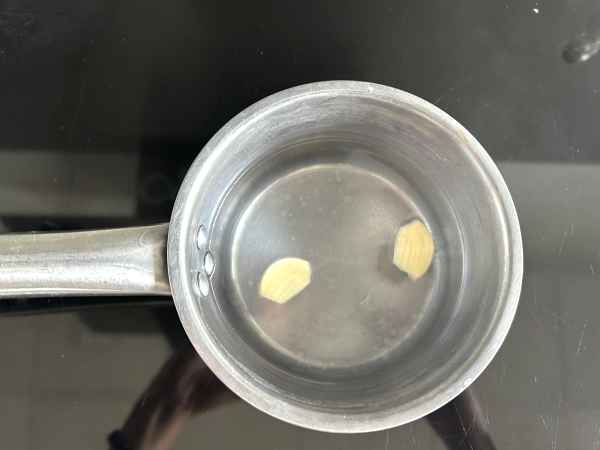 Peel the garlic clove, remove the germ if present and blanch the garlic in boiling water for 20 seconds. Drain and set aside.
Peel the garlic clove, remove the germ if present and blanch the garlic in boiling water for 20 seconds. Drain and set aside.
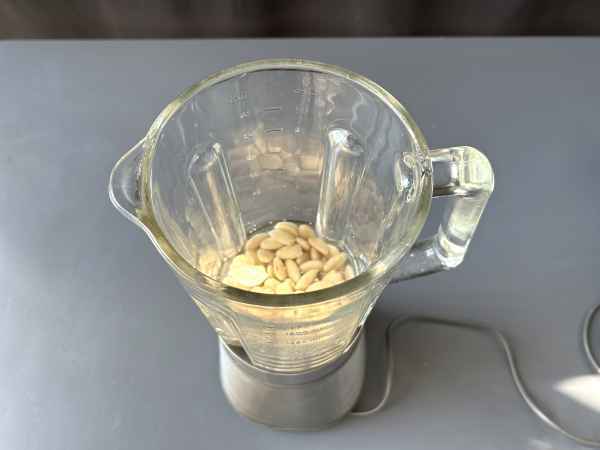 Place the almonds, the blanched garlic and about half of the water (or just enough to cover the ingredients) in the blender jar. Blend for a few minutes until a paste is obtained.
Place the almonds, the blanched garlic and about half of the water (or just enough to cover the ingredients) in the blender jar. Blend for a few minutes until a paste is obtained.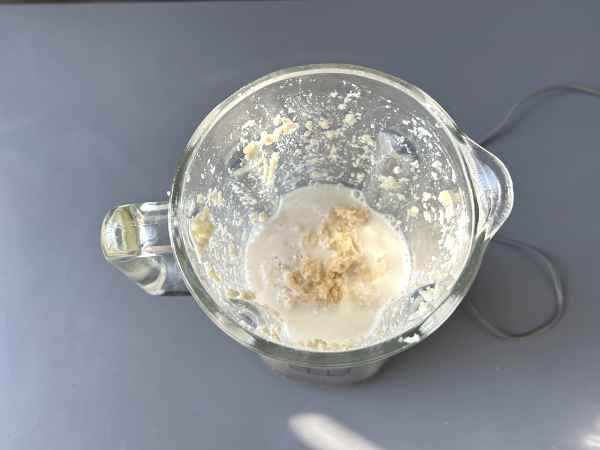 Add the rest of the water, salt, vinegar and chopped bread. Wait 5 minutes for the bread to hydrate and mash until a homogeneous mixture is obtained.
Add the rest of the water, salt, vinegar and chopped bread. Wait 5 minutes for the bread to hydrate and mash until a homogeneous mixture is obtained.
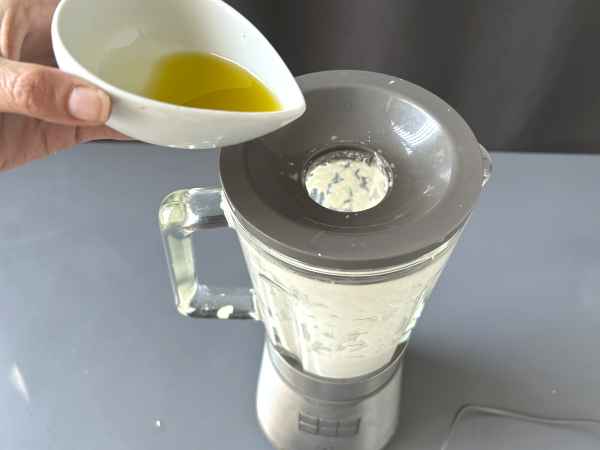 With the blender running, add the oil little by little in the form of a fine thread so that the mixture emulsifies correctly. Add salt and vinegar, and feel free to add more if necessary. The mixture should be balanced, smooth and moderately acidic.
With the blender running, add the oil little by little in the form of a fine thread so that the mixture emulsifies correctly. Add salt and vinegar, and feel free to add more if necessary. The mixture should be balanced, smooth and moderately acidic.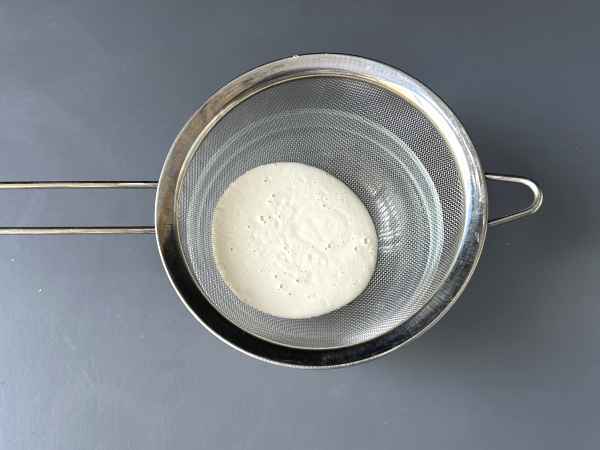 Pass the mixture through a fine mesh strainer, pressing with a spatula to obtain a silky texture.
Pass the mixture through a fine mesh strainer, pressing with a spatula to obtain a silky texture.
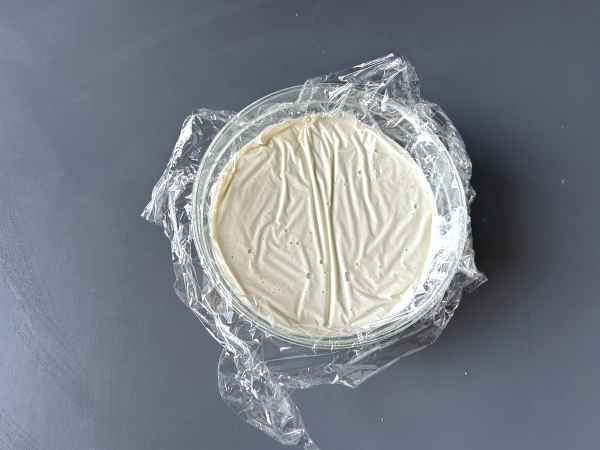 Pour the ajoblanco in an airtight container or cover the skin with plastic wrap and store in the refrigerator for at least 4 hours (ideally 8-12) for the flavors to integrate and to stabilize the emulsion.
Pour the ajoblanco in an airtight container or cover the skin with plastic wrap and store in the refrigerator for at least 4 hours (ideally 8-12) for the flavors to integrate and to stabilize the emulsion.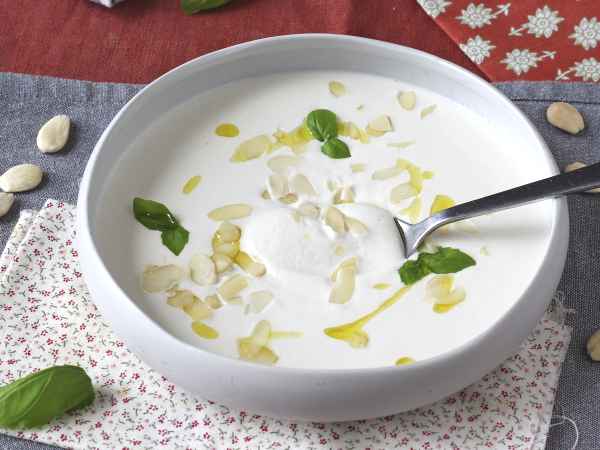 Serve the ajoblanco cold and garnish with basil, olive oil and lightly toasted sliced almonds.
Serve the ajoblanco cold and garnish with basil, olive oil and lightly toasted sliced almonds.
FAQ ❓
Why doesn't ajoblanco taste like garlic despite its name?
Although the name includes 'garlic' (ajo means garlic in Spanish), ajoblanco uses a very small amount of garlic, which is also blanched to soften its flavor, resulting in a cold soup with a delicate and slightly sweet flavor, where the almond is the protagonist.
What is the importance of letting the ajoblanco rest in the refrigerator for several hours?
Cold resting, ideally between 8 and 12 hours, allows the flavors to integrate better and the emulsion to stabilize, achieving a silky texture and a balanced flavor.
What role does bread play in the recipe and can it be omitted?
Ideally, use the crumb of a settled white bread or bread from the previous day. Bread adds body and contributes to the creamy texture that characterizes ajoblanco. Some versions omit it to obtain a lighter soup, although in this case the final consistency may vary.
Why is it recommended to use Marcona almonds for this recipe?
Marcona almonds are preferred for their mild, sweet flavor and creamy texture, which enhances the delicate flavor and silky texture of ajoblanco Andaluz.
How is the perfect emulsion achieved when adding the extra virgin olive oil?
The oil should be added little by little in the form of a fine thread while whisking the mixture, which allows it to emulsify correctly, achieving a fine, well-bonded, lump-free mixture.
What to accompany ajoblanco with?
The classic accompaniments are peeled white grapes or melon, which provide a sweet and refreshing contrast. Toasted almonds, figs, green apple, marinated sardines or even tender sprouts also combine very well. The crunchy, sweet or salty touch adds complexity without detracting from the freshness of the dish, and you can always adapt it with whatever you have on hand or inspires you at the moment.
How can the texture of ajoblanco be adjusted?
The texture of ajoblanco can be adjusted by varying the amount of bread or water. If you want it lighter, reduce the bread or add a little more water. For a thicker and more full-bodied cream, simply increase the proportion of bread slightly.
Nutrition
for 1 serving / for 100 g
Calories: 227Kcal
- Carbo: 3.3g
- Total fat: 18.6g
- Saturated fat: 1.5g
- Proteins: 8.1g
- Fibers: 3.9g
- Sugar: 0.4g
- ProPoints: 6
- SmartPoints: 7
Nutritional information for 1 serving (80g)
Cookware
blender
Attributes
Keep refrigerated
Questions
Photos of members who cooked this recipe
Comments
Rate this recipe:
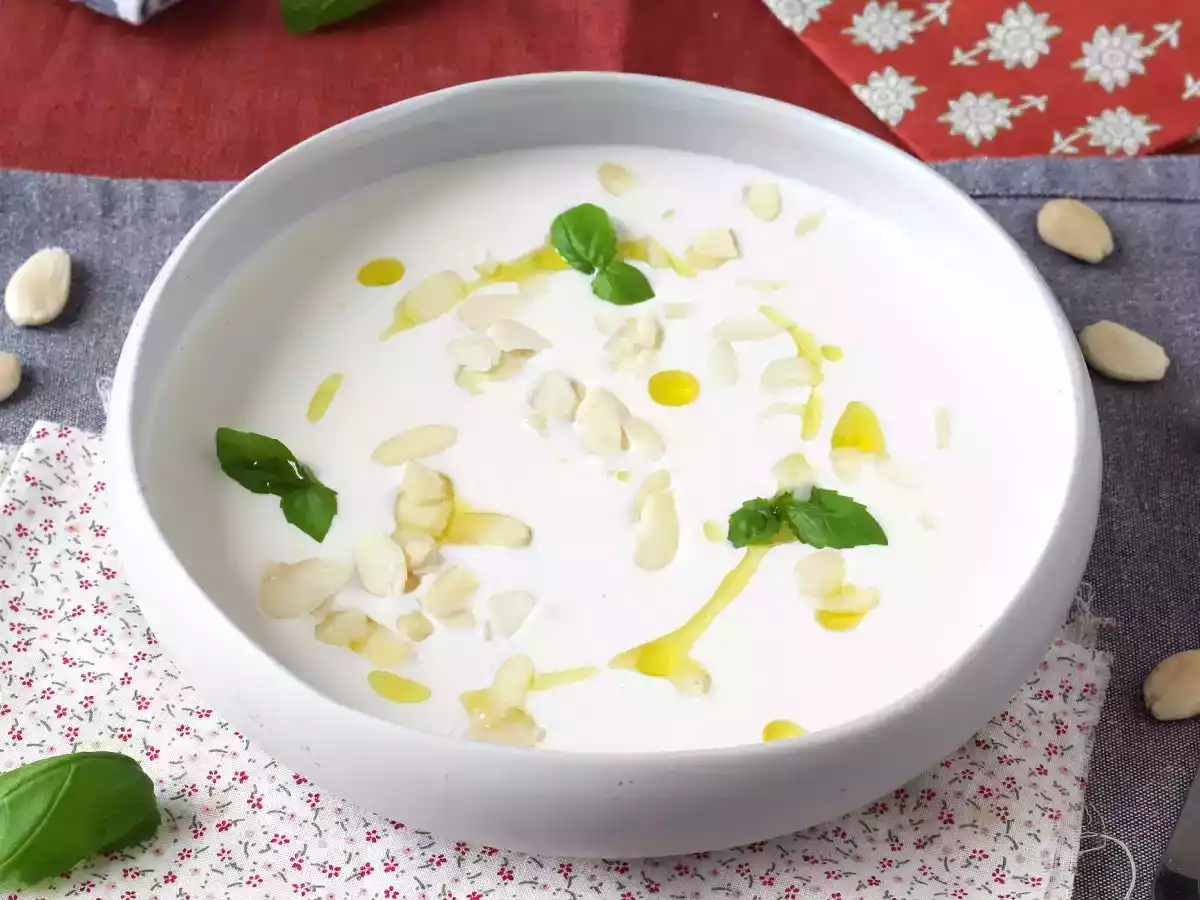
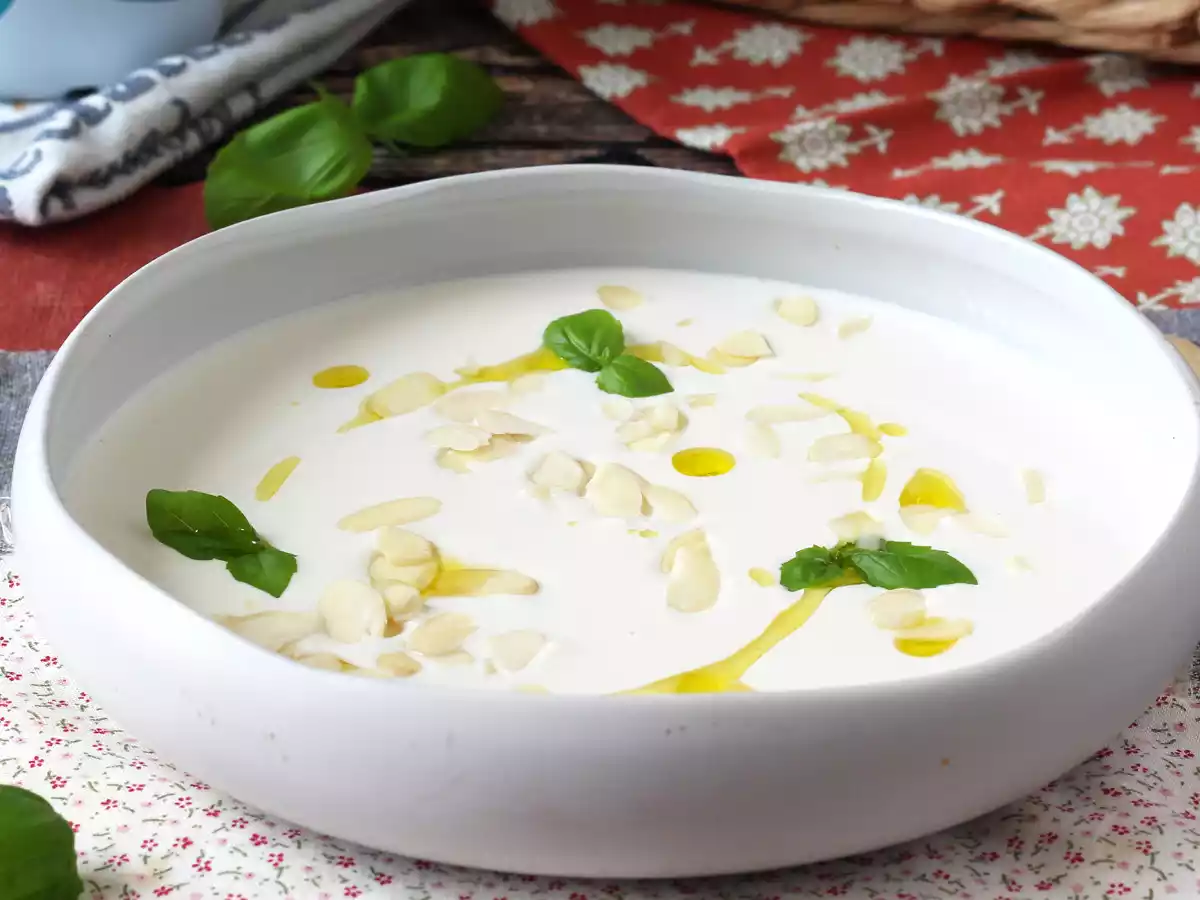

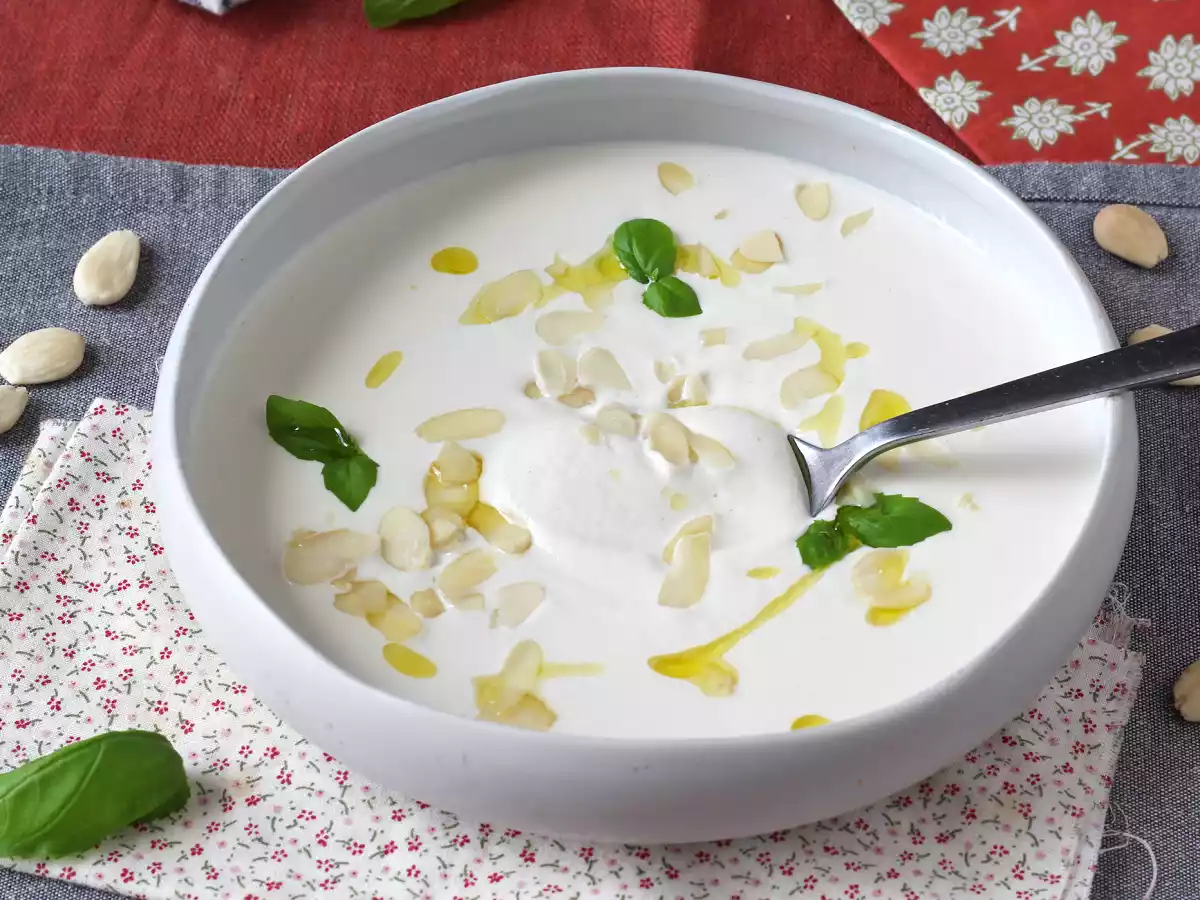
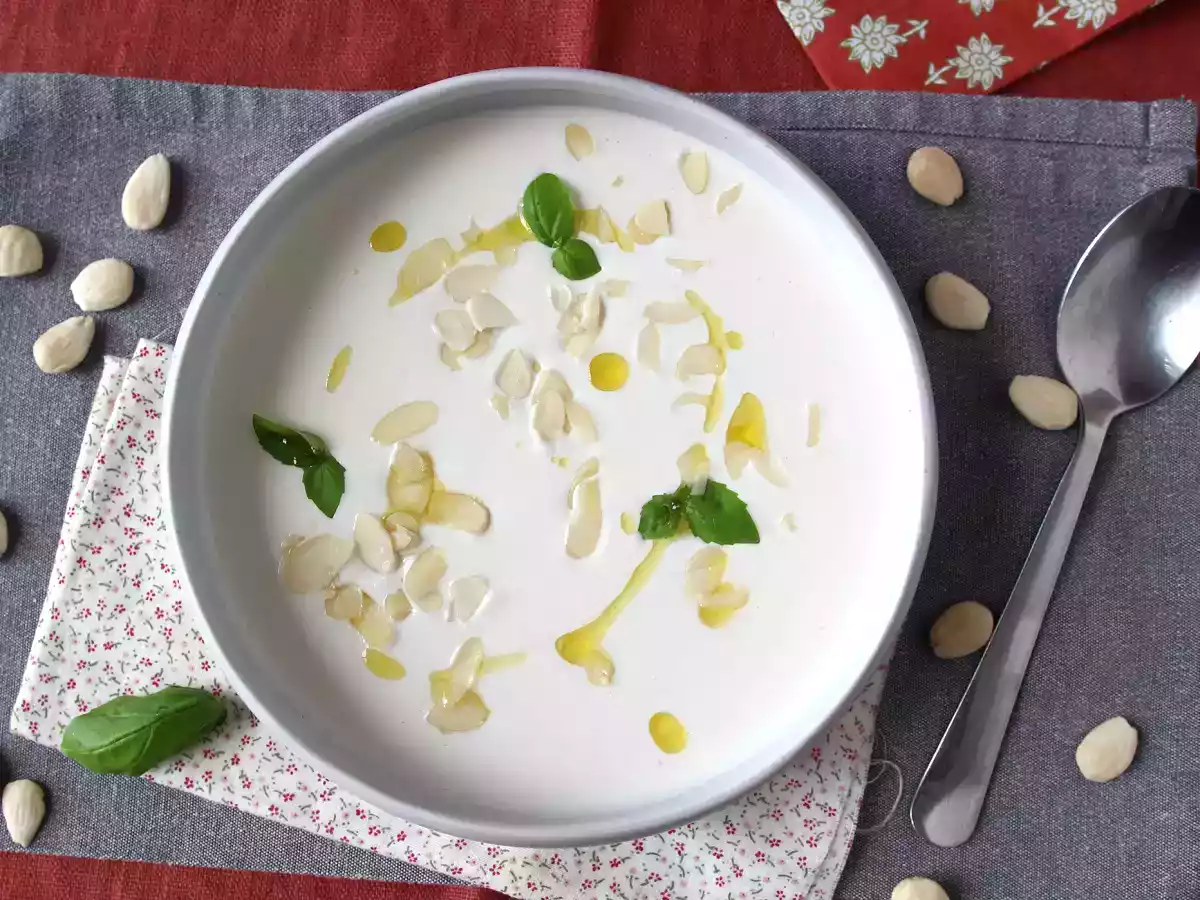
Rate this recipe